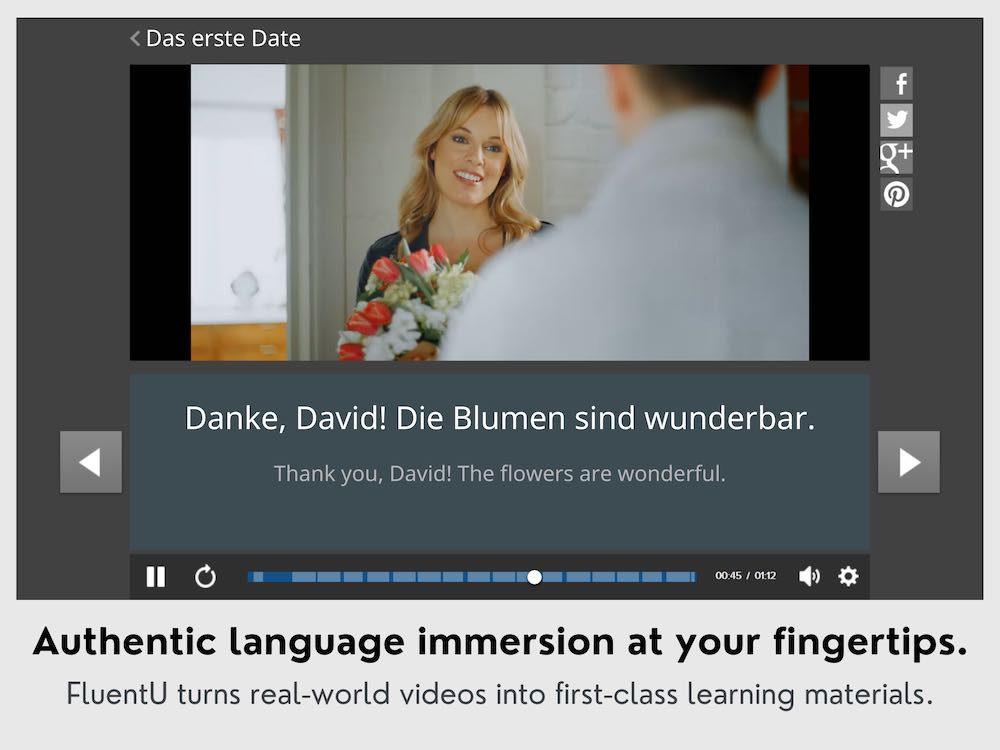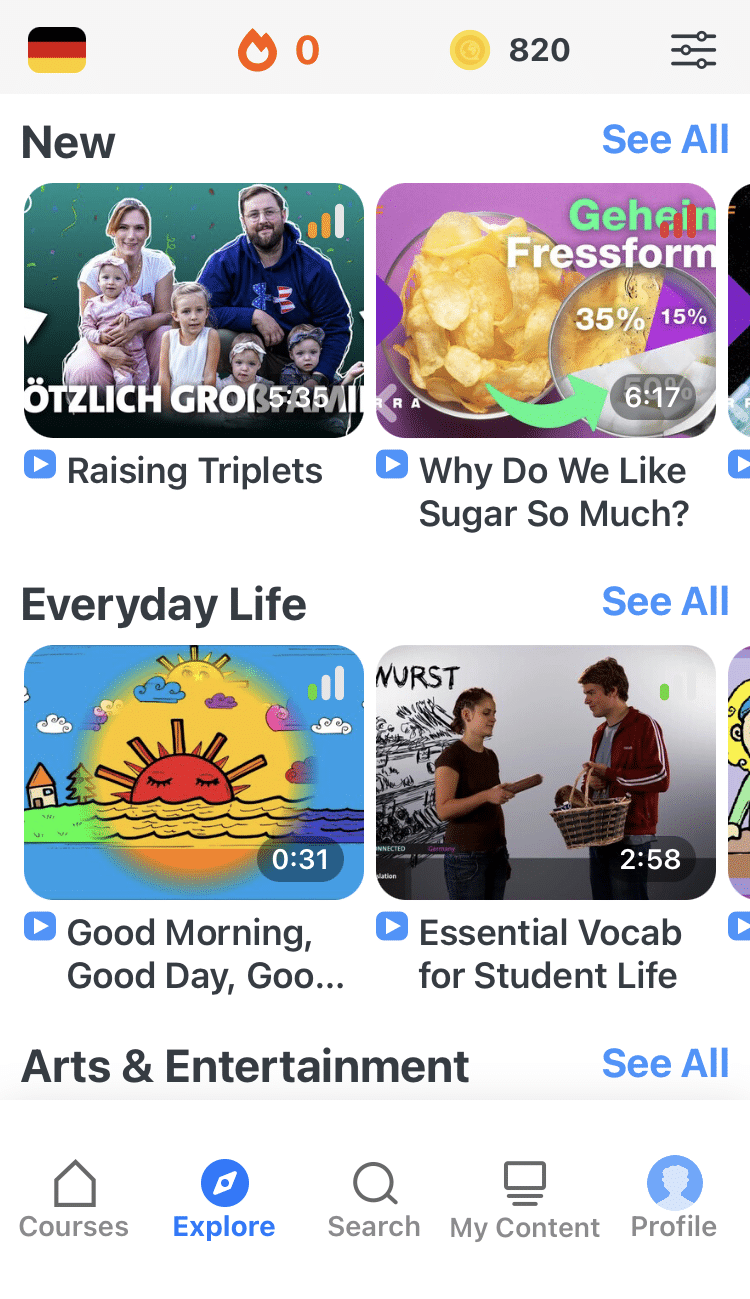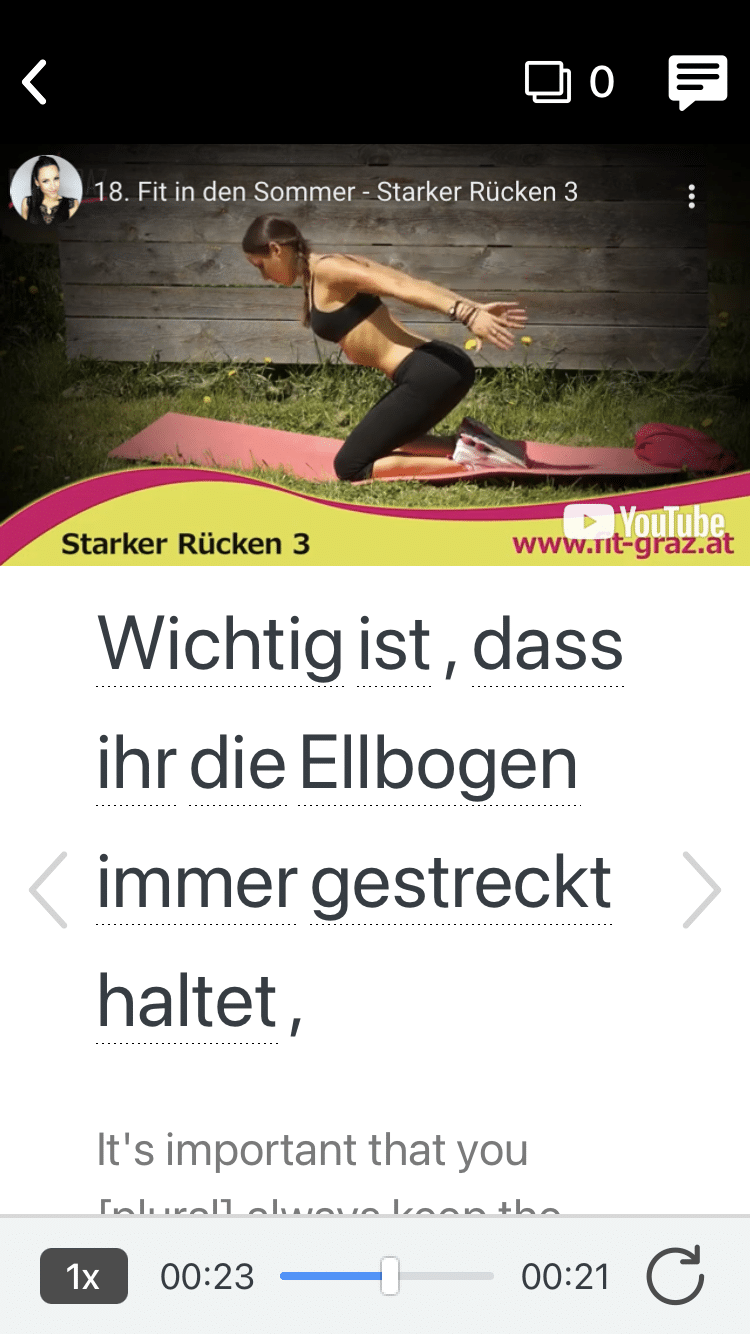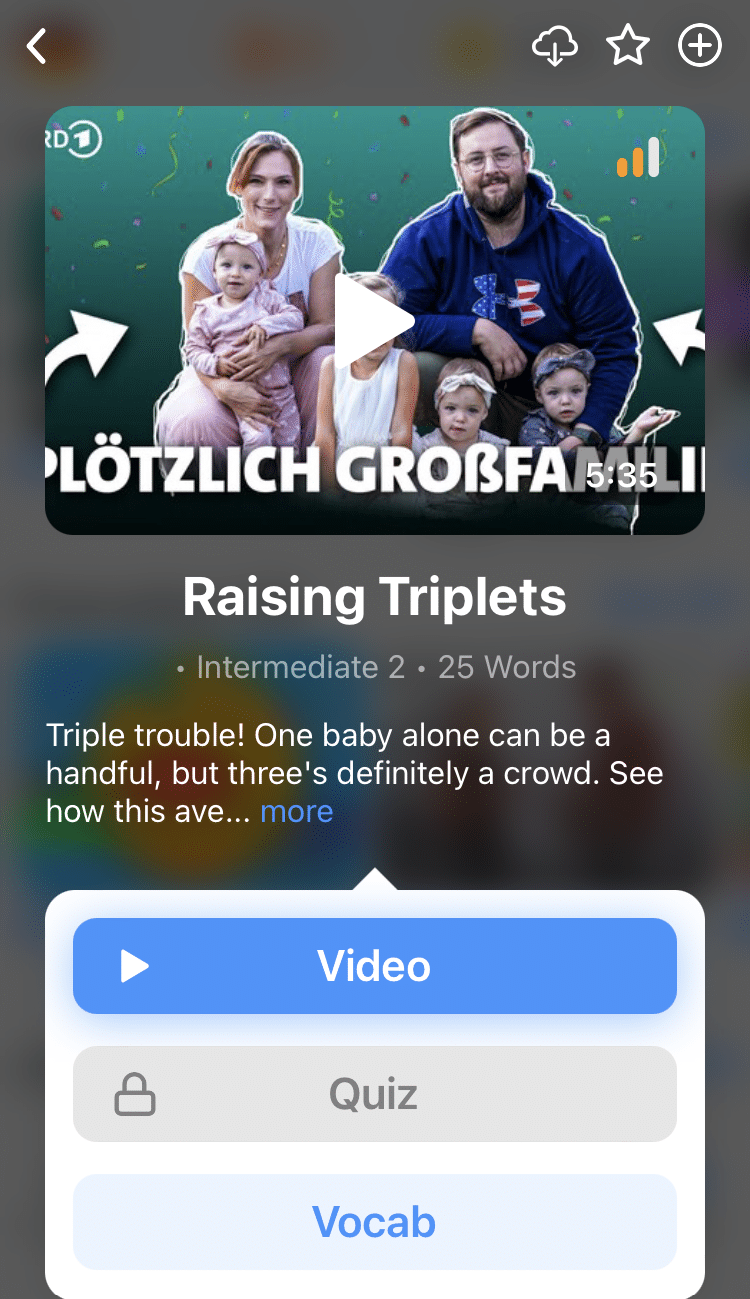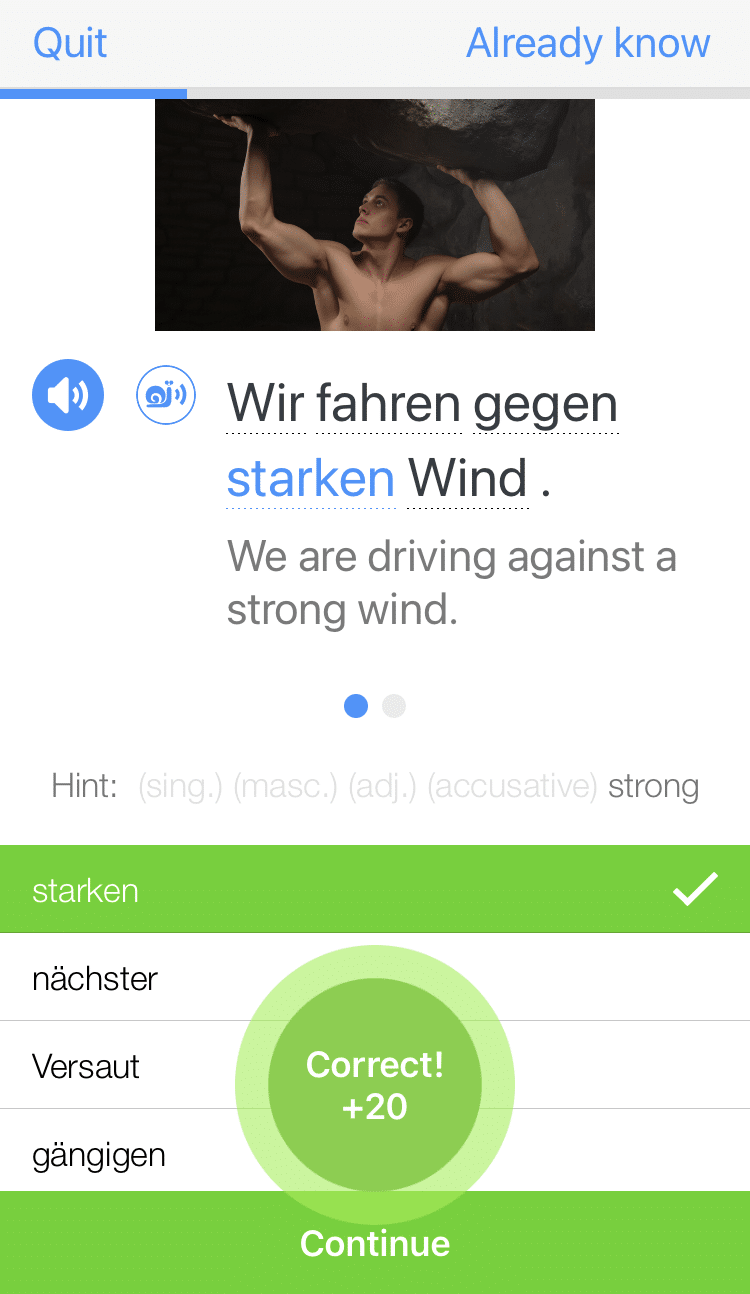
Directions in German: Essential Words and Phrases for Finding Your Way
What if you’re in a new German city and have to *gasp* ask for directions?
Whether you’re planning on going abroad or just learning German online from home, knowing how to get and give directions in German will help you with your overall fluency.
And you never know when direction-specific vocab will pop up in everyday conversation!
This guide to directions in German will make sure you know your links (left) from your rechts (right).
Contents
- Directional Adverbs in German: Wo vs. Wohin
- Useful German Direction Words and Phrases
- die Richtungen — directions
- Wie komme ich dahin? — How do I get there?
- Wie komme ich zum Bahnhof? — How do I get to the train station?
- die Stadtmitte — the city center
- der Dom — the cathedral
- das Hotel — the hotel
- links — left
- rechts — right
- gerade aus — straight on
- Gehen Sie immer gerade aus — Keep on going straight ahead
- über die Brücke gehen — to go over the bridge
- um die Ecke — round the corner
- gegenüber von — opposite from
- in Richtung der Kirche — in the direction of the church
- entlang — along
- Gehen Sie diese Straße entlang — Go down / along this street
- der Stadtplan — city map
- der Nord — north
- der Ost — east
- der West — west
- der Süd — south
- nach Norden / Osten / Westen / Süden — to the north / east / west / south
- bis zur (before a feminine noun) / bis zum (before a masculine or neuter noun) — up to
- bis zur Ampel — up to the traffic lights
- bis zum Kino — up to the cinema
- Movement and the Accusative in German
- Useful Online Resources to Help with Directions in German!
- And One More Thing...
Download: This blog post is available as a convenient and portable PDF that you can take anywhere. Click here to get a copy. (Download)
Directional Adverbs in German: Wo vs. Wohin
There’s one part of directional speak in German that we have to clear up first.
In German, there are multiple words for “where”:
| German | English | Meaning | Example |
|---|---|---|---|
| Wo | "Where" | Indicates a specific place | Wo sind wir? Where are we? |
| Wohin | Combines "where" and "to" | Indicates a direction or motion towards a place | Wohin gehen wir? Where are we going? |
Basically, to give wo that extra sense of destination, you just need to add on –hin to the end to create wohin. It’s not too tricky, but getting it right is important.
This also happens with another word: da and dort, which are another pair of German words for “there”:
| German | English | Meaning | Example |
|---|---|---|---|
| Da | "There" | Usually indicates a place relatively close to the speaker. | Da ist er! There he is! |
| Dort | "There" | Usually indicates a place further away from speaker, usually considerable distance. | Sie hat ein Haus dort. She has a house there. |
| Dahin | Combines "there" and "to" | Indicates movement or direction towards a place, usually one a bit closer to the speaker. | Leg das Buch bitte dahin. Please put the book down there. |
| Dorthin | Combines "there" and "to" | Indicates movement or direction towards a place, usually one further away from the speaker. | Du fährst nach Berlin? Kannst du mich dorthin mitnehmen? You're driving to Berlin? Can you take me there with you? |
Luckily, da and dort this difference in da and dort isn’t so strict in modern German, so you’ll often hear them used interchangeably, with a preference for da in more informal contexts.
Be careful not to get caught out with da, however, as colloquially it can also mean “here” or “there” when talking about someone’s presence somewhere:
Der Zug ist schon da. (The train is already here.)
Ist deine Mutter gerade da? (Is your mom there right now?)
Useful German Direction Words and Phrases
Now that you know about wohin, dahin and dorthin, you should be able to knock up your own direction sentences and questions.
Let’s look at the basics:
die Richtungen — directions
Wie komme ich dahin? — How do I get there?
Here’s an example of dahin in action, meaning “there” plus movement.
Below are some more useful vocabulary words and phrases:
Wie komme ich zum Bahnhof? — How do I get to the train station?
die Stadtmitte — the city center
der Dom — the cathedral
das Hotel — the hotel
links — left
rechts — right
gerade aus — straight on
Gehen Sie immer gerade aus — Keep on going straight ahead
über die Brücke gehen — to go over the bridge
um die Ecke — round the corner
gegenüber von — opposite from
in Richtung der Kirche — in the direction of the church
entlang — along
Gehen Sie diese Straße entlang — Go down / along this street
der Stadtplan — city map
der Nord — north
der Ost — east
der West — west
der Süd — south
nach Norden / Osten / Westen / Süden — to the north / east / west / south
bis zur (before a feminine noun) / bis zum (before a masculine or neuter noun) — up to
bis zur Ampel — up to the traffic lights
bis zum Kino — up to the cinema
You can see these phrases in action on FluentU, along with other practical German vocabulary used in conversations.
FluentU takes authentic videos—like music videos, movie trailers, news and inspiring talks—and turns them into personalized language learning lessons.
You can try FluentU for free for 2 weeks. Check out the website or download the iOS app or Android app.
P.S. Click here to take advantage of our current sale! (Expires at the end of this month.)
Movement and the Accusative in German
When it comes to directions, there’ll usually be movement in the sentences used.
One important thing to remember is that certain prepositions can change the definite or indefinite articles. Some prepositions in German will take the dative case if there’s no movement in the sentence; if there’s movement, they’ll take the accusative.
These are the prepositions in question:
| German Preposition | English |
|---|---|
| an | at / on / to |
| auf | at / on / to / upon |
| hinter | behind |
| in | in / into |
| neben | beside / near / next to |
| über | about / above / over /across |
| unter | under / among |
| vor | in front of / before |
| zwischen | between |
The examples below should clarify things a bit more.
Ich gehe in den Supermarkt.
I’m going into the supermarket.
In this example, I’m moving into the supermarket, so der Supermarket needs to be in the accusative. This means der Supermarkt becomes den Supermarkt.
Ich stehe vor dem Supermarkt.
I’m standing in front of the supermarket.
However, with this one, I’m standing in front of the supermarket and there’s no movement or direction indicated in the sentence. So we need the dative case and den Supermarkt switches to dem Supermarkt.
Here’s another example:
Ich lege das Buch auf das Bett.
I place the book on the bed.
As the book is being put down—a clear sign of movement—we need the accusative case.
Das Buch liegt auf dem Bett.
The book is lying on the bed.
Here the book is lying still on the bed, so we need the dative.
Useful Online Resources to Help with Directions in German!
Now that we’ve gone over the basic grammar and vocab you need to talk about directions, it’s time to start practicing.
One of the best ways to practice your German directions is to get out and about on the streets. However, not all of us will be heading over to Germany anytime soon, so here are a few websites that will be really useful:
- Google Maps…the German version: Set your Google Maps to German and plot out a route. You can then open up the details of the route and follow the directions given.
- ViaMichelin.de: This is another example of a website that can calculate routes in German. There’s also extra information on places the roads pass, including restaurants, hotels and sightseeing locations.
- Girls4teaching.com has created this cute video, which goes through the basics of how to approach strangers in German and which questions you should be asking when directions are what you need.
- BBC Languages has a really useful video that focuses on directions in German. You can see some of Munich’s sites while watching, too!
- languagesresources.co.uk should be bookmarked by all language learners, whatever their level! Just look at all these worksheets related to German directions. They’ll help you test yourself so you can gauge what level you’re at.
So now you don’t have to be scared about ever being lost in a German-speaking country again. And hopefully you understand all the grammar and why you need to say things the way you need to say them.
You’re ready to successfully communicate with someone about directions and to ask how to get from A to B…
Hey, maybe you’ll even choose the locals over Google Maps!
Download: This blog post is available as a convenient and portable PDF that you can take anywhere. Click here to get a copy. (Download)
And One More Thing...
Want to know the key to learning German effectively?
It's using the right content and tools, like FluentU has to offer! Browse hundreds of videos, take endless quizzes and master the German language faster than you've ever imagine!
Watching a fun video, but having trouble understanding it? FluentU brings native videos within reach with interactive subtitles.
You can tap on any word to look it up instantly. Every definition has examples that have been written to help you understand how the word is used. If you see an interesting word you don't know, you can add it to a vocabulary list.
And FluentU isn't just for watching videos. It's a complete platform for learning. It's designed to effectively teach you all the vocabulary from any video. Swipe left or right to see more examples of the word you're on.
The best part is that FluentU keeps track of the vocabulary that you're learning, and gives you extra practice with difficult words. It'll even remind you when it’s time to review what you’ve learned.
Start using the FluentU website on your computer or tablet or, better yet, download the FluentU app from the iTunes or Google Play store. Click here to take advantage of our current sale! (Expires at the end of this month.)
